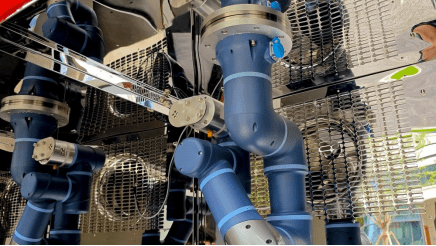Written by Robin
Senior Engineer, Doaho Test (DHT®)
As product requirements for environmental adaptability and long-term reliability continue to rise, the climatic test chamber has become an essential piece of testing equipment across manufacturing, R&D, and quality assurance sectors. From new energy vehicles and aerospace components to semiconductor devices and biomedical materials, any product development process that involves extreme temperature and humidity conditions relies heavily on precise climate simulation.
However, with a wide variety of climatic chambers available on the market and significant differences in their technical specifications, selecting the right solution for your specific industry can be a complex challenge. Engineers, lab managers, and procurement teams often struggle to find a chamber that truly fits their operational and regulatory needs.
This article breaks down the selection process into six key areas, guiding you toward a professional, informed, and sustainable investment in the climatic test chamber that’s best suited for your industry.
Define Your Industry Needs and Core Testing Objectives
The selection of a climatic test chamber should be based on the real-world application and product requirements. Different industries face varying environmental stress conditions and reliability risks, which lead to different test parameters, temperature/humidity control needs, and operational modes.
-
Automotive electronics: Requires high-temperature, high-humidity, thermal shock, and temperature cycling tests to ensure component performance under harsh climatic conditions.
-
Aerospace: Demands simulation of low temperature, high altitude, heat/humidity, and alternating climatic stresses to assess the integrity of complete systems or structural assemblies.
-
Semiconductors and microelectronics: Call for extremely precise temperature and humidity control, minimal fluctuations, and clean environments to avoid interfering with sensitive devices.
-
New energy batteries: Require testing under high-temperature storage, low-temperature charge/discharge, and high-humidity infiltration to verify battery cell safety and consistency.
-
Advanced materials and structural parts: Focus on long-term durability under cyclic conditions such as humidity, dryness, salt spray, condensation, and frost.
Clearly identifying the typical environmental failure modes in your industry is the foundation of accurate equipment selection.
Match Core Performance Specifications to Your Test Requirements
A reliable climatic test chamber must align closely with your testing objectives. Below are the three most important technical indicators to evaluate during selection:
(1) Temperature Range and Change Rate
The temperature control range determines the scope of environmental conditions the chamber can simulate, while the temperature change rate reflects how quickly it can transition between those conditions.
-
Standard applications: Recommend a range of -40°C to +100°C
-
Rapid temperature cycling or ESS (Environmental Stress Screening): ≥5°C/min
-
Aerospace and military testing: Typically require a broader range (e.g., -70°C to +180°C) with fast response times
(2) Humidity Control Precision
Humidity testing demands high accuracy and uniformity—particularly in condensation, damp heat, or hygroscopicity tests.
-
Recommended humidity range: 20% to 98% RH
-
Control accuracy: At least ±2.5% RH
-
Premium chambers often include forced air circulation systems to ensure consistent humidity distribution
(3) Temperature & Humidity Uniformity and Fluctuation
Consistent test results depend on stable and uniform environmental conditions throughout the chamber. Inconsistent conditions at sample edges can lead to skewed or invalid results.
-
Target temperature uniformity: ≤±2°C; fluctuation: ≤±0.5°C
-
Target humidity uniformity: ≤±3% RH; fluctuation: ≤±1.5% RH
Evaluate Structural Design and Spatial Compatibility
Beyond core specifications, the chamber’s physical design must suit your laboratory setup and operational flow.
-
Benchtop chambers: Ideal for small samples or low-frequency testing in academic or compact lab environments
-
Vertical standard chambers: Suitable for mid-volume product validation, balancing performance and footprint
-
Walk-in chambers: Designed for large-scale samples such as vehicle cabins, power systems, or energy storage modules
Also consider practical design factors such as access doors, sample shelf layout, test port locations, and available expansion interfaces. Features like modular construction, remote monitoring, and ease of maintenance will significantly impact long-term usability and efficiency.
Ensure Compliance with Relevant Industry Standards
As climatic testing plays a critical role in product certification, the chamber you select must meet the standards required by your target market or customer.
Key standards include:
-
IEC 60068 series: International environmental testing standard for electrical and electronic products
-
GB/T 2423 series: China’s national standard for environmental test methods
-
MIL-STD-810: U.S. military standard for environmental testing
-
ISO 16750 / ISO 26262: Automotive environmental and functional safety testing standards
-
JEDEC JESD22 series: Widely used in semiconductor reliability testing
Before purchasing, ask the supplier to provide documentation confirming that the chamber supports the relevant testing standards and includes valid calibration certificates.
Assess Long-Term Operational Costs and Maintenance Requirements
Climatic test chambers are energy-intensive and often run under high stress. Besides the initial purchase price, long-term performance, maintenance ease, and total cost of ownership are critical considerations.
Key factors include:
-
Energy efficiency: High-quality chambers feature inverter compressors, smart humidity control, and insulation enhancements to reduce energy consumption
-
Maintainability: Look for replaceable humidification modules, easily accessible air filters, and a design that facilitates cleaning and inspection
-
Remote monitoring capabilities: Enable alarm management, data export, and remote diagnostics, improving efficiency
-
After-sales support: Ensure that the manufacturer offers periodic calibration, technical upgrades, and responsive local service
Over the long run, a chamber that is easy to maintain and highly reliable will yield better ROI than a low-cost model that frequently fails or is difficult to service.
Avoid the Low-Cost Trap—Choose a Trusted and Certified Brand
While some budget chambers may meet basic requirements, many fall short in critical areas such as temperature/humidity accuracy, background air cleanliness, structural integrity, and data traceability. When used for certified testing or high-reliability R&D, such shortcomings can cause costly rework or even test invalidation.
Checklist to avoid costly mistakes:
-
Work with manufacturers that hold CMA, ILAC, or third-party metrology certifications
-
Request full sample test reports, BOMs for critical components, and brand disclosures (e.g., sensors, compressors, controllers)
-
Refer to real industry case studies—especially from companies in your sector—to validate long-term equipment performance and service quality
A climatic test chamber is not just a one-time purchase—it’s a strategic investment in your product’s quality assurance and brand credibility.
Conclusion: Choosing the Right Climatic Test Chamber Is the First Step Toward Product Excellence
An industry-appropriate climatic test chamber does far more than simulate extreme environments—it connects your lab’s precision with your product’s real-world performance. It supports compliance, accelerates development, and ensures that what you deliver is not just functional, but reliable under all conditions.
By evaluating your needs across six key dimensions—industry match, performance, structure, compliance, operation, and brand—you can confidently invest in the right climatic testing system and lay the groundwork for long-term product success.


